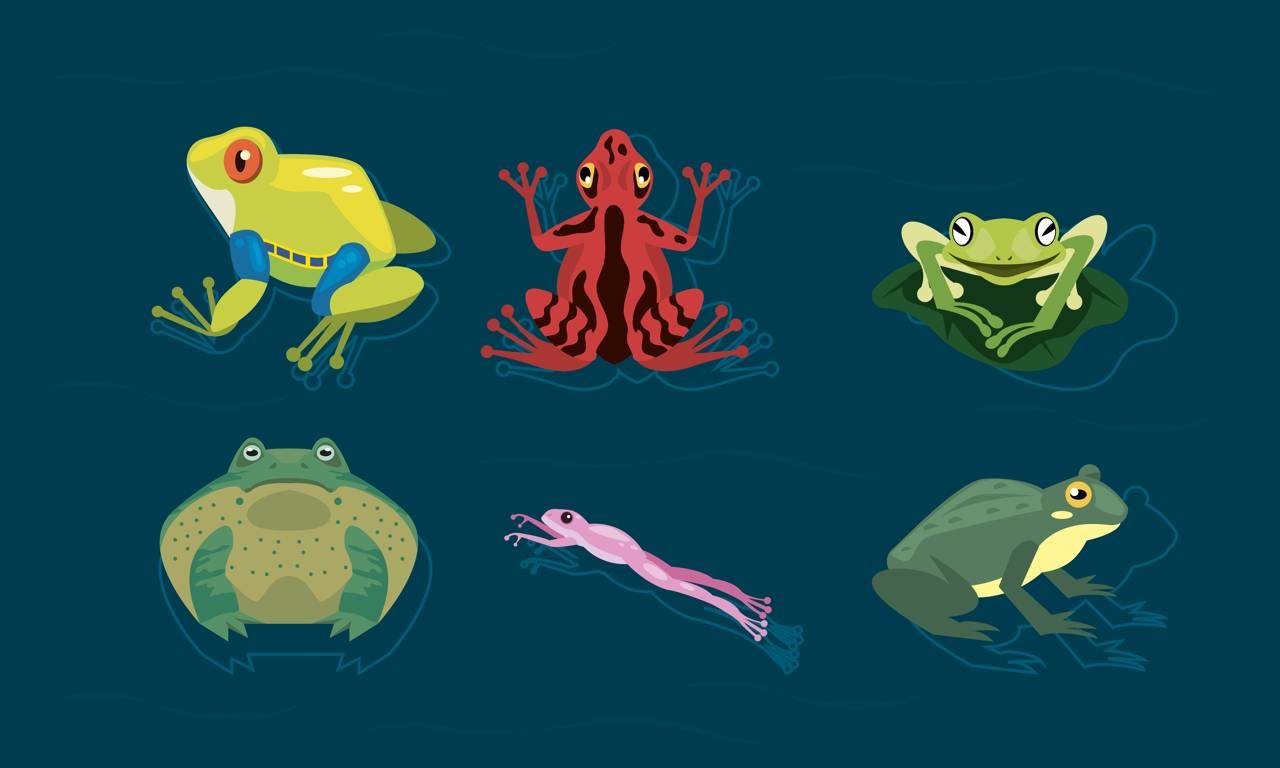Frogs are a testament to nature’s versatility, having adapted to an array of climatic conditions around the world. From freezing temperatures to arid deserts, these amphibians exhibit remarkable adaptability that enables their survival across diverse environments. Here we explore specific frog species that thrive in unique weather conditions:
1. Wood Frog (Rana sylvatica)
- Adaptation: Freeze-tolerance
- Habitat: Northern North America
- Wood Frogs are renowned for their ability to survive being frozen during the winter months. They produce cryoprotectants like glucose, allowing them to endure subzero temperatures until spring.
2. African Bullfrog (Pyxicephalus adspersus)
- Adaptation: Estivation
- Habitat: Sub-Saharan Africa
- African Bullfrogs estivate during dry seasons, burying themselves in the mud to conserve moisture and metabolic energy until the rains return.
3. Couch’s Spadefoot Toad (Scaphiopus couchii)
- Adaptation: Burrowing
- Habitat: Southwestern United States
- This species spends much of its life underground in arid regions, emerging only during rare rainfall events to breed explosively and take advantage of temporary pools.
4. Green Tree Frog (Hyla cinerea)
- Adaptation: Humidity tolerance
- Habitat: Southeastern United States
- The Green Tree Frog thrives in humid environments, using its adhesive toe pads to climb vegetation and avoid floods during heavy rains.
5. Desert Rain Frog (Breviceps macrops)
- Adaptation: Moisture retention
- Habitat: Coastal deserts of Namibia and South Africa
- This frog absorbs moisture through its skin from the damp coastal sands and can survive with minimal water.
6. Mountain Yellow-legged Frog (Rana muscosa)
- Adaptation: Cold-water tolerance
- Habitat: Sierra Nevada, California
- These frogs are adapted to live in the cold, high-altitude streams of the Sierra Nevada, capable of surviving icy water temperatures.
7. Crucifix Toad (Notaden bennettii)
- Adaptation: Mucus cocooning
- Habitat: Arid regions of Australia
- Also known as the Holy Cross Frog, this species produces a mucus cocoon to prevent water loss during dry spells.
8. Red-eyed Tree Frog (Agalychnis callidryas)
- Adaptation: Moisture dependence
- Habitat: Central American rainforests
- Capable of adapting to wet and humid conditions, the Red-eyed Tree Frog uses its sticky toes to navigate the lush canopy.
9. European Common Frog (Rana temporaria)
- Adaptation: Cold-weather spawning
- Habitat: Europe
- This species is well adapted to breeding in cold weather, capable of starting its breeding cycle in early spring, even among ice.
10. Malayan Horned Frog (Megophrys nasuta)
- Adaptation: Camouflage and moisture tolerance
- Habitat: Tropical rainforests of Southeast Asia
- With its leaf-like appearance, this frog blends seamlessly into the rainforest floor’s leaf litter, staying moist in humid conditions.
Conclusion
These frog species demonstrate the extraordinary adaptability of amphibians to various environmental challenges, from extreme temperatures to arid or humid conditions. Their unique adaptations allow them to exploit available niches effectively, contributing to their incredible biodiversity.
FAQs About Weather-Adaptive Frogs
How do frogs generally adapt to cold weather?
Frogs may enter hibernation, produce cryoprotectants, or remain active in cold-water streams to withstand cold climates.
What do frogs do in extremely dry environments?
Many frogs estivate, burrowing into the ground or creating protective cocoons to conserve moisture until conditions improve.
Can frogs adapt to both dry and wet climates?
Yes, some species exhibit dual adaptations, utilizing burrowing or moisture retention in dry times and thriving in wet conditions when water is plentiful.
Do all frogs require water to breed?
Most frogs rely on water or moist environments for breeding, as their eggs often need moisture to survive and develop.
What role do frogs play in their ecosystems?
Frogs help control insect populations and serve as both predator and prey, playing key roles in maintaining ecological balance.

